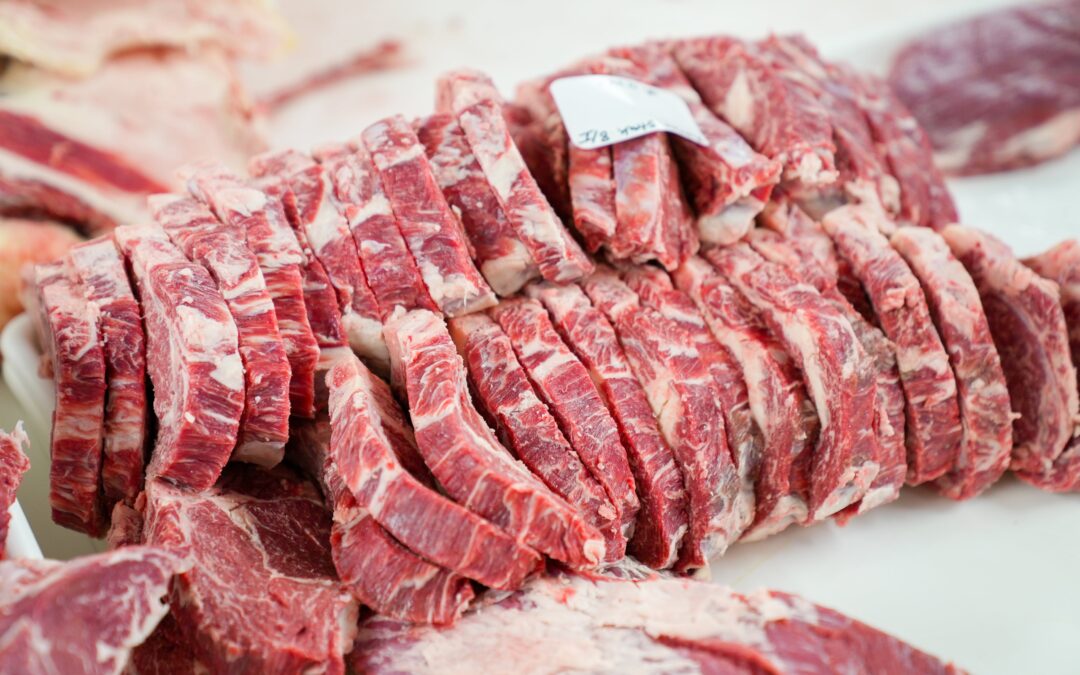The global processed meat market is valued at $3.3 trillion, with global meat consumption projected to grow by 14% from 2020 to 2030 (FAO). Most meat, including beef, pork, ruminants, and poultry, is produced and processed at scale by larger commercial farms or processing plants. While trends point towards consumer preference for fair treatment of animals and environmental consciousness, a commoditized global industry cannot meet these standards. Ranchers and farmers committed to raising animals that align with eco-consciousness or fair animal treatment often do not meet minimum quotas to process in high-efficiency, consolidated industrial processing facilities, so they look for smaller regional processors to slaughter and butcher their meat.
Compared to commercialized plants, smaller regional meat processors play an important role in the local economy. They offer specialized services, including custom cuts and meat products. They also provide cost-effective solutions for smaller producers who may only sell one animal at a time, often butchering half or whole animals into specialized cuts for individual customers. Local meat processing ensures local farmers sell to their neighbors, allows information sharing about farming and processing practices, and offers greater employment opportunities for living wage jobs.
The recent global pandemic highlighted some barriers small animal farmers face in accessing affordable processing services. With funding from the USDA, many communities are examining their processing landscape and deciding what is needed to build up the local meat industry. New Venture Advisors has assisted in several recent studies, speaking with dozens of farmers, ranchers, processors, and other stakeholders. Several important considerations and possibilities are worth sharing.
Current Barriers
Small farming and processing costs are significantly higher when compared to those at an industrialized processing facility. The resulting end price of the meat is higher than at the grocery store and can deter customers from purchasing. Some of the main contributors to the rising cost of locally produced meat are:
-
- Labor is one of the highest expenses. Becoming a butcher or processor requires extensive training, education, and regulatory compliance, yet the wages pale in comparison to other vocational fields like electrician or carpentry. The work is also physically demanding, and mechanized processes are expensive and only become efficient with a high production volume. Further, there continues to be a labor shortage of skilled workers in all the needed roles for slaughter and processing facilities.
- Land costs and availability deter those trying to enter the field or grow their business. As land prices increase, especially in concentrated regions with access to more retail customers, farmers cannot afford adequate space to raise their animals. Some farmers rent land from neighbors, but this is a risky investment. They also have trouble expanding their properties as suburban development increases.
- Distance is another barrier, as farmers and processors are sometimes hours away from each other. In some regions, there are not enough processing services for certain animals, so small farmers refuse to raise those animals.
Creative Solutions
Building a new facility might seem like the obvious solution, but it is not always the most time- or cost-friendly option. Building a facility is subject to extensive environmental regulations, and meat processing is subject to heavy regulations. Further, inspectors are required to be present for certain parts of the processes, and plants are regularly audited. While a new facility may be the only option, other creative solutions may be as effective.
-
- Invest in an existing nearby facility – assess infrastructure and equipment for upgrades that could increase capacity.
- Increase training for butchers, plant managers, and salespeople to maintain and expand the industry, meet more demand, and retain employees. Consider developing a workforce training program in partnership with a community or technical college.
- Introduce a mobile processing unit– some extension services retrofit trailers into inspected processing facilities. The processor then travels to farmers rather than the farmer moving their animals long distances. This also encourages consumer education, as a mobile unit parked in a central location increases engagement with the work.
Thinking About How to Increase Processing Capacity in Your Area?
Barriers and solutions can vary by region depending on your local meat processing and farming landscape. If your local meat industry could benefit from operational investment, consider the following parameters as you begin assessing your needs.
-
- How many small animal producers are in your county and the surrounding counties? What types of animals are they raising?
- What are the meat processing options in a 50-mile radius?
- Is it easy for you to find locally-raised meat?
- What desired meat products are you unable to get in your area?
- Is building a new facility the best solution?
- Do you have access to the workforce or a partner to support the workforce?
Still trying to figure out where to start? New Venture Advisors can help you determine what your region’s farmers, customers, and processors need to maintain and develop processing capacity in your local food system.
Photo courtesy of Mark Stebnicki via Pexels



